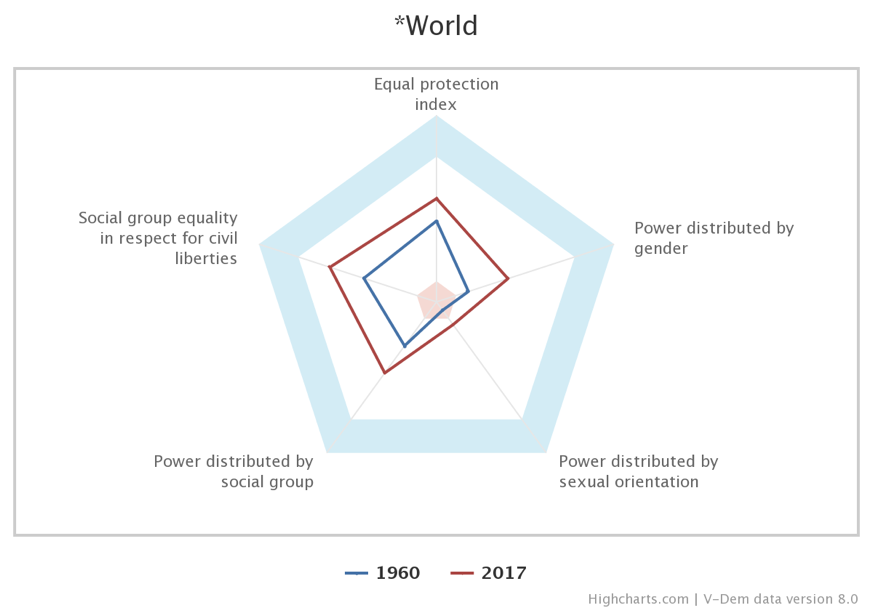Zero Discrimination Day
By: V-Dem Staff
Mar 01, 2019
March 1st marks Zero Discrimination Day. It was first celebrated in 2014 as part of a UNAIDS campaign to fight prejudice against the victims the Human Immunodeficiency Virus (HIV). However, various forms of discrimination – for example, based on gender, sexual orientation, religion – remain widespread today. Consequently, the day has acquired a wider meaning – the celebration of inclusion, tolerance and diversity.
Social movements fighting for rights and equality peaked in the 1960s. This reached many countries, addressing a wide range of issues. Yet according to Equaldex, same-sex relations continue to be illegal in 70 countries. There are no laws protecting people from the LGBT community from discrimination in 101 countries. Women worldwide also face unequal treatment. According to the International Labor Organization, they earn approximately 20% less than men.
V-Dem’s Country Radar Chart tool, illustrates global trends in equality have evolved from 1960 to 2017. Political power continues to be skewed towards privileged groups in society, leaving others at a systemic disadvantage. The indicators here are measured on a scale from 0 to 4 where 0 represents total exclusion and 4 an equal distribution of political power. The distribution of power distribution by sexual orientation barely reaches 1 in both years. This suggests people from the LGBT community have much less power. Despite the existence of formal rights, there are informal norms that exclude them. The Equal protection index gauges the extent to which the state grants and protects rights and freedoms evenly across all social groups. In contrast to the slow progress of sexual orientation, it points to an improvement for all citizens generally.
To learn more about V-Dem’s indicators and graphing tools, please visit v.dem.net.


